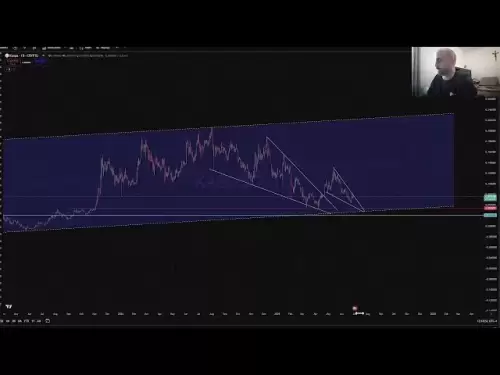-
 Bitcoin
Bitcoin $107,341.7259
0.15% -
 Ethereum
Ethereum $2,438.6204
0.70% -
 Tether USDt
Tether USDt $1.0003
-0.02% -
 XRP
XRP $2.1866
1.94% -
 BNB
BNB $649.0952
0.36% -
 Solana
Solana $150.9602
5.63% -
 USDC
USDC $0.9999
0.00% -
 TRON
TRON $0.2742
0.40% -
 Dogecoin
Dogecoin $0.1645
1.93% -
 Cardano
Cardano $0.5669
1.18% -
 Hyperliquid
Hyperliquid $37.8286
4.19% -
 Bitcoin Cash
Bitcoin Cash $491.4669
-2.74% -
 Sui
Sui $2.8150
3.06% -
 Chainlink
Chainlink $13.4184
2.91% -
 UNUS SED LEO
UNUS SED LEO $9.0809
0.27% -
 Avalanche
Avalanche $18.0295
2.60% -
 Stellar
Stellar $0.2396
1.19% -
 Toncoin
Toncoin $2.8587
0.13% -
 Shiba Inu
Shiba Inu $0.0...01160
2.59% -
 Litecoin
Litecoin $86.4192
1.45% -
 Hedera
Hedera $0.1486
1.19% -
 Monero
Monero $308.4324
0.87% -
 Polkadot
Polkadot $3.4202
1.43% -
 Bitget Token
Bitget Token $4.6436
-0.34% -
 Dai
Dai $0.9998
-0.02% -
 Ethena USDe
Ethena USDe $1.0002
0.00% -
 Uniswap
Uniswap $7.1527
3.29% -
 Pi
Pi $0.5357
-8.45% -
 Pepe
Pepe $0.0...09588
4.61% -
 Aave
Aave $259.9759
0.81%
How to avoid fraud in USDT transactions?
Protect yourself from USDT scams by using reputable exchanges, verifying counterparties, employing secure transaction methods, and regularly reviewing your account activity for suspicious transactions.
Mar 11, 2025 at 01:35 pm
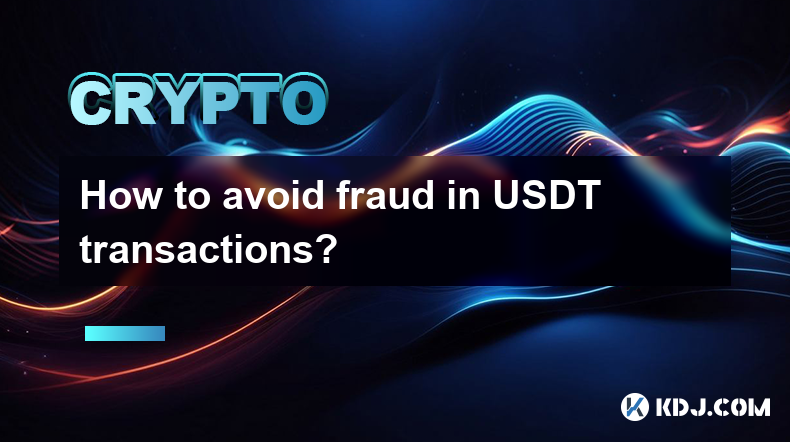
Key Points:
- Understanding the risks associated with USDT transactions.
- Identifying common USDT scams and fraudulent activities.
- Utilizing reputable exchanges and platforms.
- Verifying the legitimacy of counterparties.
- Employing secure transaction methods.
- Regularly reviewing transaction history and account activity.
- Reporting suspicious activities promptly.
How to Avoid Fraud in USDT Transactions
Tether (USDT), a prominent stablecoin pegged to the US dollar, is widely used in the cryptocurrency ecosystem. However, its popularity makes it a target for fraudulent activities. Understanding the risks and implementing robust security measures is crucial to protect yourself from scams.
Understanding the Risks
The decentralized nature of cryptocurrencies inherently carries risks. USDT transactions, while seemingly simple, are vulnerable to various scams if proper precautions aren't taken. These risks range from phishing attacks to fraudulent exchanges and malicious actors posing as legitimate traders. Being aware of these risks is the first step in mitigating them.
Identifying Common USDT Scams
Several common scams target USDT users. Phishing attempts, often disguised as legitimate emails or messages, aim to steal login credentials or private keys. Fake exchanges or platforms mimic legitimate ones to lure users into depositing USDT, which is then stolen. Ponzi schemes promising high returns with USDT investments are another prevalent risk. Scammers often exploit the anonymity associated with cryptocurrency transactions.
Choosing Reputable Exchanges and Platforms
Selecting a well-established and regulated cryptocurrency exchange is paramount. Research thoroughly before using any platform. Look for exchanges with strong security measures, transparent fee structures, and positive user reviews. Avoid using unknown or poorly reviewed platforms, as these are more likely to be involved in fraudulent activities. Always verify the exchange's legitimacy independently.
Verifying Counterparty Legitimacy
When engaging in peer-to-peer (P2P) USDT transactions, verify the legitimacy of your counterparty. Check their trading history and reputation on the platform. Look for reviews and feedback from other users. Be wary of users offering unusually attractive rates or those who pressure you into making quick transactions. A cautious approach is essential in P2P trading.
Secure Transaction Methods
Employ secure transaction methods to minimize the risk of fraud. Use multi-factor authentication (MFA) wherever possible. Never share your private keys or seed phrases with anyone. Be cautious of links or attachments in emails or messages, as these may contain malware. Always double-check the recipient's address before sending USDT. A small mistake can lead to irreversible loss.
Regularly Reviewing Transactions and Account Activity
Regularly review your transaction history and account activity for any suspicious activity. Monitor your balance and look for unauthorized transactions. Set up email or SMS alerts to notify you of any account changes. Promptly report any suspicious activity to the exchange or platform you are using. Proactive monitoring can help identify and prevent fraudulent activities.
Reporting Suspicious Activities
If you encounter any suspicious activity or believe you have been a victim of a USDT scam, report it immediately to the relevant authorities and the exchange or platform involved. Provide as much detail as possible, including transaction IDs and communication records. Reporting helps protect other users and potentially recover lost funds. Don't hesitate to seek help from cybersecurity professionals if needed.
Employing Cold Storage
Consider using a hardware wallet, often referred to as a cold storage wallet, for storing significant amounts of USDT. Hardware wallets offer enhanced security compared to software wallets, significantly reducing the risk of hacking or theft. They are offline devices, making them less vulnerable to online attacks.
Understanding On-Chain vs. Off-Chain Transactions
Be aware of the difference between on-chain and off-chain USDT transactions. On-chain transactions are recorded on the blockchain, providing transparency and verifiability. Off-chain transactions, such as those facilitated through centralized exchanges, are not directly visible on the blockchain and carry a slightly higher risk.
Diversifying Your Holdings
Don't put all your eggs in one basket. Diversifying your cryptocurrency holdings can help mitigate risk. Holding a variety of assets reduces the impact of potential losses from a single investment or a scam targeting a specific cryptocurrency.
Frequently Asked Questions
Q: What is the best way to protect myself from USDT scams? A: A combination of using reputable exchanges, verifying counterparties, employing secure transaction methods, and regularly reviewing account activity provides the best protection.
Q: What should I do if I think I've been scammed? A: Immediately report the incident to the relevant authorities and the exchange or platform involved. Gather all relevant information, such as transaction IDs and communication records.
Q: Are all USDT exchanges safe? A: No, not all USDT exchanges are safe. Thoroughly research and verify the legitimacy of any exchange before using it. Look for established platforms with strong security measures and positive user reviews.
Q: How can I verify the legitimacy of a counterparty in a P2P transaction? A: Check their trading history and reputation on the platform. Look for reviews and feedback from other users. Be wary of users offering unusually attractive rates or those who pressure you into quick transactions.
Q: Is it safe to store large amounts of USDT on an exchange? A: While convenient, storing large amounts of USDT on an exchange exposes you to the risk of exchange hacks or security breaches. Consider using a hardware wallet for enhanced security.
Disclaimer:info@kdj.com
The information provided is not trading advice. kdj.com does not assume any responsibility for any investments made based on the information provided in this article. Cryptocurrencies are highly volatile and it is highly recommended that you invest with caution after thorough research!
If you believe that the content used on this website infringes your copyright, please contact us immediately (info@kdj.com) and we will delete it promptly.
- XRP, Ripple, and Bitcoin: Decoding the Latest Crypto Moves
- 2025-06-29 08:30:13
- NBA Legend Scottie Pippen's Crypto Picks: SHIB and XRP in the Spotlight
- 2025-06-29 08:50:12
- Bitcoin, US Strategy, and Cryptocurrency Regulation: Navigating the Digital Frontier
- 2025-06-29 09:10:13
- Chainlink's $17 Breakout: Bullish Momentum Fueled by Mastercard Partnership
- 2025-06-29 08:30:13
- Crypto Launches Q3 2025: Top Picks to Watch
- 2025-06-29 09:10:13
- Gemini AI's 2025 Crypto Forecast: Altcoin Boom Ahead?
- 2025-06-29 08:52:14
Related knowledge
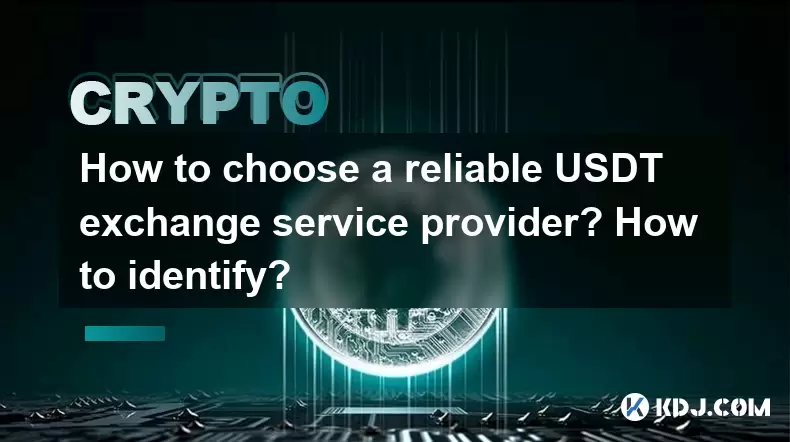
How to choose a reliable USDT exchange service provider? How to identify?
Jun 12,2025 at 03:15pm
Understanding the Role of USDT in Cryptocurrency TradingUSDT (Tether) is one of the most widely used stablecoins in the cryptocurrency market. It is designed to maintain a 1:1 peg with the U.S. dollar, offering traders and investors a way to hedge against volatility while remaining within the crypto ecosystem. Choosing a reliable USDT exchange service p...
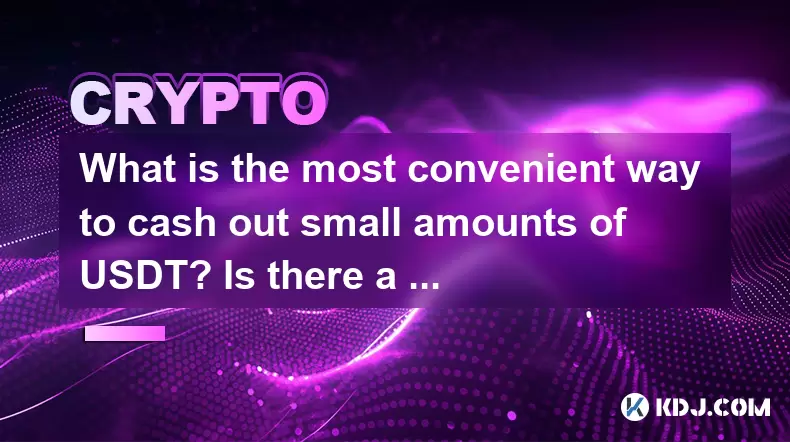
What is the most convenient way to cash out small amounts of USDT? Is there a shortcut?
Jun 11,2025 at 11:00pm
Understanding the Need to Cash Out Small USDT AmountsCashing out small amounts of USDT can be a challenge for many crypto users. Traditional methods often involve high fees, minimum withdrawal limits, or cumbersome verification processes that make it inefficient for small transactions. The key is to find a method that balances speed, cost, and convenien...
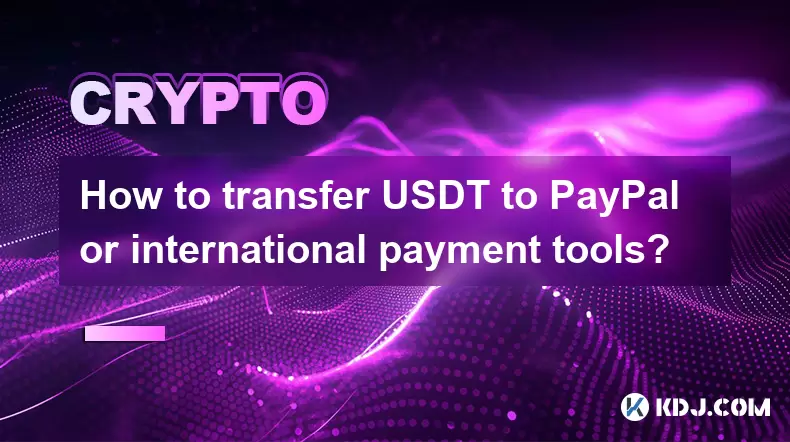
How to transfer USDT to PayPal or international payment tools?
Jun 15,2025 at 05:28am
Understanding the Basics of USDT and PayPal IntegrationUSDT (Tether) is a stablecoin pegged to the US dollar, offering blockchain-based value transfer with minimal volatility. PayPal, on the other hand, is a centralized digital wallet that facilitates fiat currency transactions globally. Direct integration between USDT and PayPal does not exist due to t...
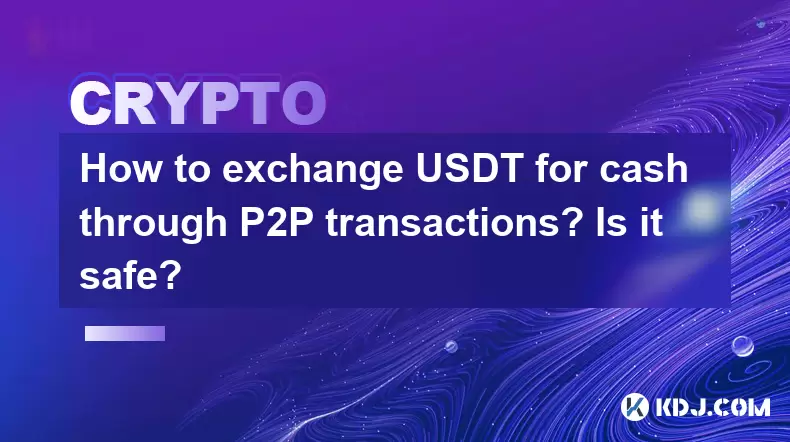
How to exchange USDT for cash through P2P transactions? Is it safe?
Jun 18,2025 at 07:56am
Understanding USDT and P2P TransactionsTether (USDT) is a stablecoin pegged to the value of the US dollar, making it a popular choice for users who want to avoid the volatility of other cryptocurrencies while still participating in the crypto ecosystem. Peer-to-peer (P2P) transactions allow individuals to trade directly with each other without going thr...
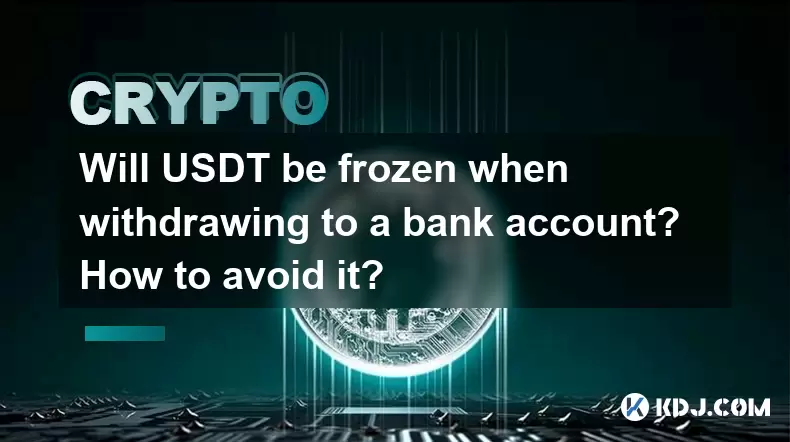
Will USDT be frozen when withdrawing to a bank account? How to avoid it?
Jun 15,2025 at 10:03am
Understanding USDT Withdrawals and Bank Account Freezing RisksWhen users decide to withdraw USDT (Tether) to a bank account, one of the most common concerns is whether their funds will be frozen during the process. This concern stems from real-life cases where individuals have encountered delays or restrictions when converting digital assets into fiat c...
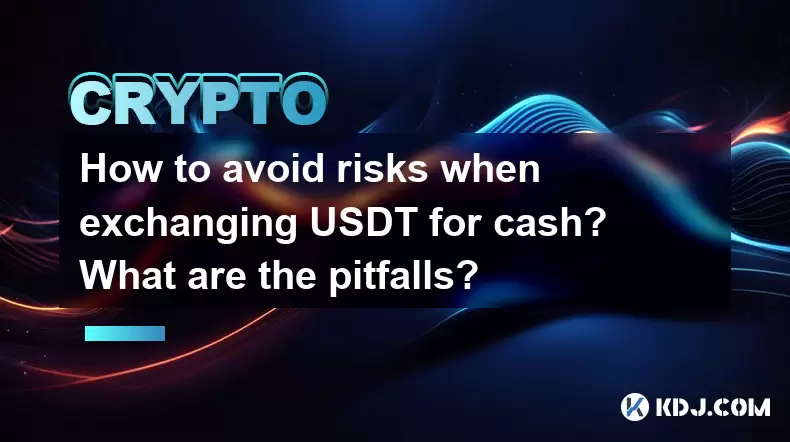
How to avoid risks when exchanging USDT for cash? What are the pitfalls?
Jun 11,2025 at 08:14pm
Understanding the Risks of Exchanging USDT for CashWhen exchanging USDT (Tether) for cash, users must be aware of the potential risks involved. As a stablecoin pegged to the US dollar, USDT is widely used in crypto transactions due to its price stability. However, converting it into fiat currency like USD or CNY can expose users to several pitfalls, inc...

How to choose a reliable USDT exchange service provider? How to identify?
Jun 12,2025 at 03:15pm
Understanding the Role of USDT in Cryptocurrency TradingUSDT (Tether) is one of the most widely used stablecoins in the cryptocurrency market. It is designed to maintain a 1:1 peg with the U.S. dollar, offering traders and investors a way to hedge against volatility while remaining within the crypto ecosystem. Choosing a reliable USDT exchange service p...

What is the most convenient way to cash out small amounts of USDT? Is there a shortcut?
Jun 11,2025 at 11:00pm
Understanding the Need to Cash Out Small USDT AmountsCashing out small amounts of USDT can be a challenge for many crypto users. Traditional methods often involve high fees, minimum withdrawal limits, or cumbersome verification processes that make it inefficient for small transactions. The key is to find a method that balances speed, cost, and convenien...

How to transfer USDT to PayPal or international payment tools?
Jun 15,2025 at 05:28am
Understanding the Basics of USDT and PayPal IntegrationUSDT (Tether) is a stablecoin pegged to the US dollar, offering blockchain-based value transfer with minimal volatility. PayPal, on the other hand, is a centralized digital wallet that facilitates fiat currency transactions globally. Direct integration between USDT and PayPal does not exist due to t...

How to exchange USDT for cash through P2P transactions? Is it safe?
Jun 18,2025 at 07:56am
Understanding USDT and P2P TransactionsTether (USDT) is a stablecoin pegged to the value of the US dollar, making it a popular choice for users who want to avoid the volatility of other cryptocurrencies while still participating in the crypto ecosystem. Peer-to-peer (P2P) transactions allow individuals to trade directly with each other without going thr...

Will USDT be frozen when withdrawing to a bank account? How to avoid it?
Jun 15,2025 at 10:03am
Understanding USDT Withdrawals and Bank Account Freezing RisksWhen users decide to withdraw USDT (Tether) to a bank account, one of the most common concerns is whether their funds will be frozen during the process. This concern stems from real-life cases where individuals have encountered delays or restrictions when converting digital assets into fiat c...

How to avoid risks when exchanging USDT for cash? What are the pitfalls?
Jun 11,2025 at 08:14pm
Understanding the Risks of Exchanging USDT for CashWhen exchanging USDT (Tether) for cash, users must be aware of the potential risks involved. As a stablecoin pegged to the US dollar, USDT is widely used in crypto transactions due to its price stability. However, converting it into fiat currency like USD or CNY can expose users to several pitfalls, inc...
See all articles























